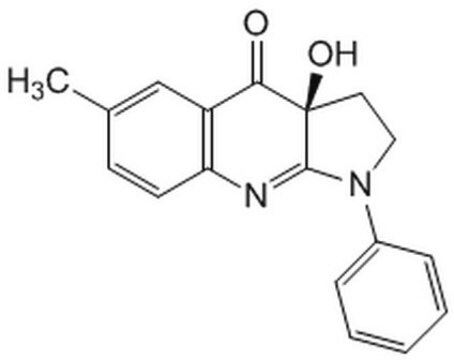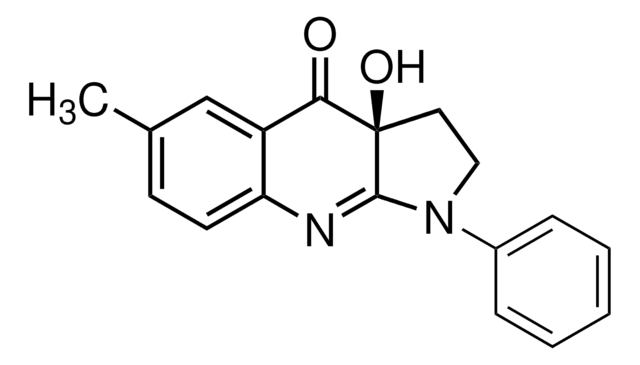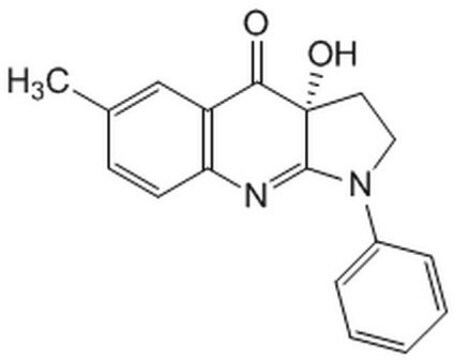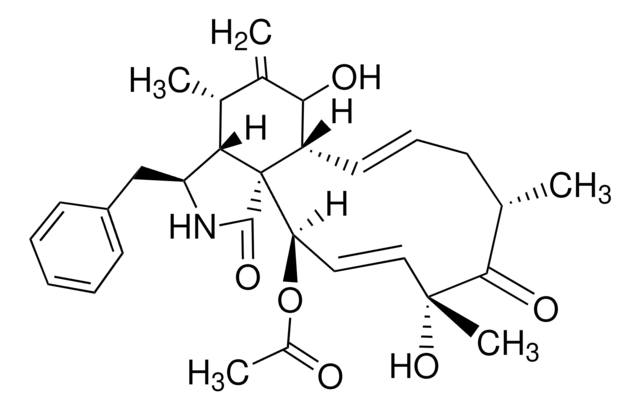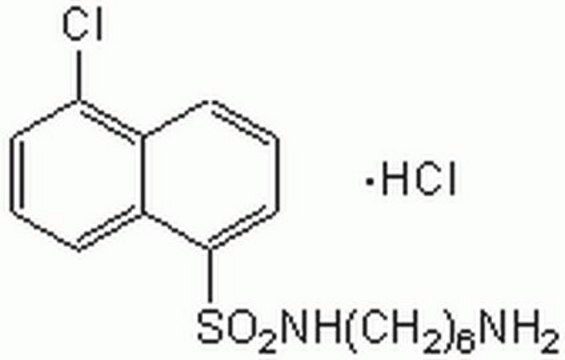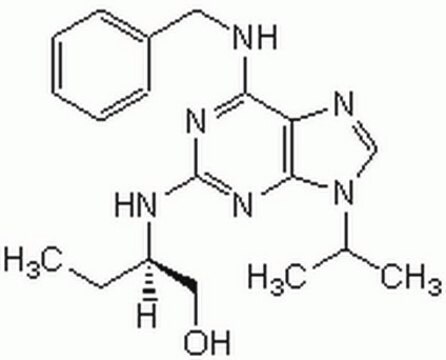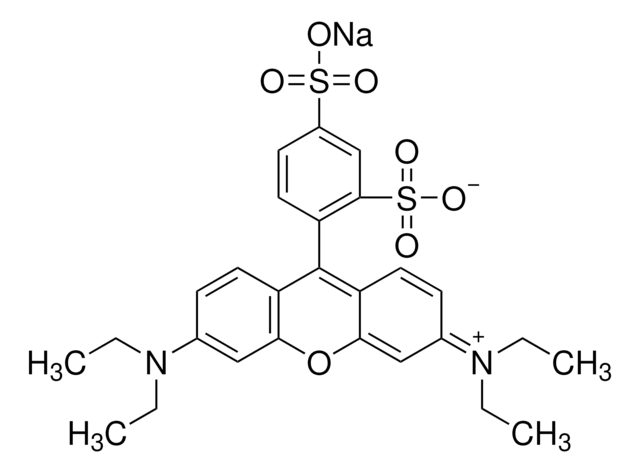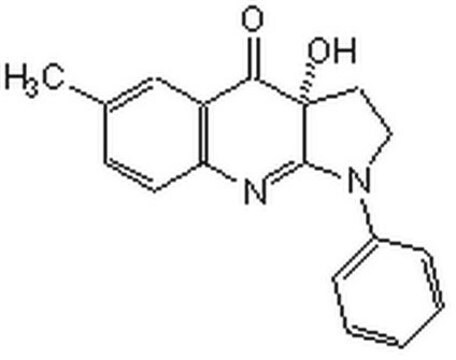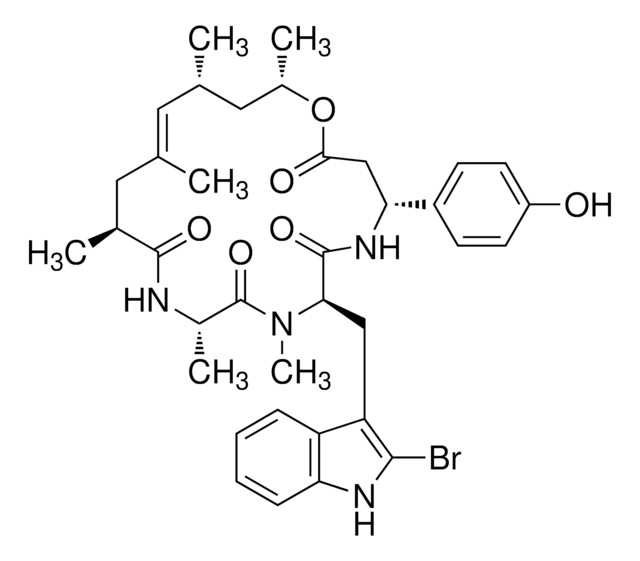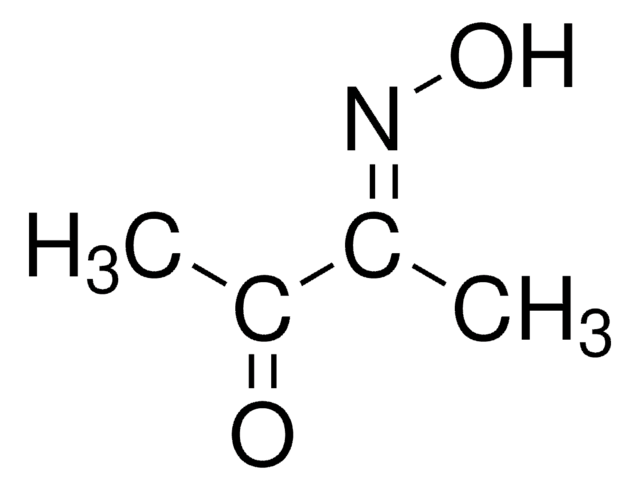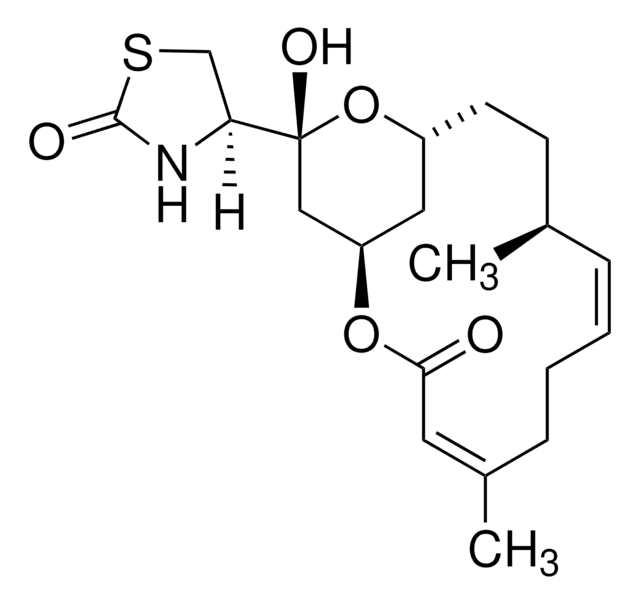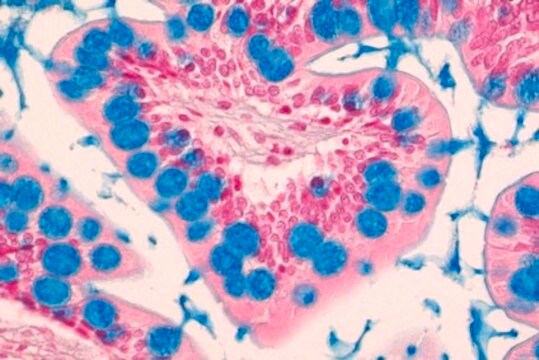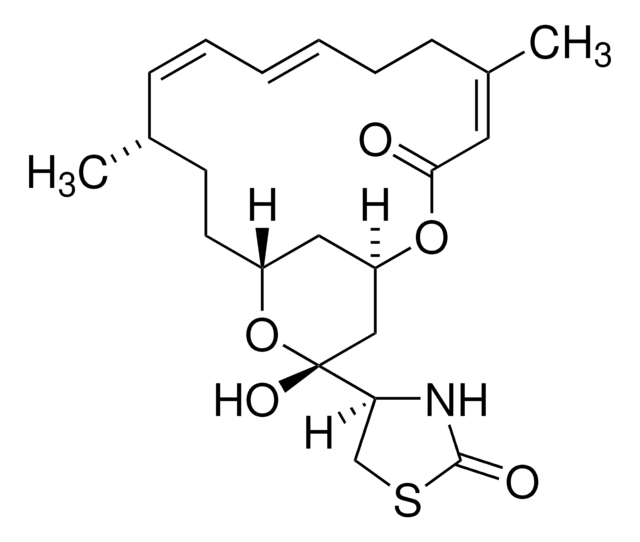203390
(±)-Blebbistatin
≥97% (HPLC), solid, Myosin II inhibitor, Calbiochem®
Sinónimos:
(±)-Blebbistatin
About This Item
Productos recomendados
Nombre del producto
(±)-Blebbistatin, (±)-Blebbistatin, CAS 674289-55-5, is a cell-permeable, selective, and reversible inhibitor of nonmuscle myosin II. Blocks cell blebbing and disrupts cell migration & cytoKinesis in vertebrate cells.
Quality Level
assay
≥97% (HPLC)
form
solid
manufacturer/tradename
Calbiochem®
storage condition
OK to freeze
protect from light
color
yellow
solubility
methanol: 1.5 mg/mL
100% DMSO: 100 mg/mL
90% DMSO: 75 mg/mL
shipped in
wet ice
storage temp.
−20°C
InChI
1S/C18H16N2O2/c1-12-7-8-15-14(11-12)16(21)18(22)9-10-20(17(18)19-15)13-5-3-2-4-6-13/h2-8,11,22H,9-10H2,1H3
InChI key
LZAXPYOBKSJSEX-UHFFFAOYSA-N
General description
Biochem/physiol Actions
ATPase
Packaging
Reconstitution
Other Notes
Kovacs, M., et al. 2004. J. Biol. Chem.279, 35557.
Straight, A.F., et al. 2003. Science299, 1743.
Cheung, A., et al. 2001. Mol. Biol. Cell Suppl.12, 271a.
Legal Information
Storage Class
11 - Combustible Solids
wgk_germany
WGK 2
flash_point_f
Not applicable
flash_point_c
Not applicable
Certificados de análisis (COA)
Busque Certificados de análisis (COA) introduciendo el número de lote del producto. Los números de lote se encuentran en la etiqueta del producto después de las palabras «Lot» o «Batch»
¿Ya tiene este producto?
Encuentre la documentación para los productos que ha comprado recientemente en la Biblioteca de documentos.
Los clientes también vieron
Nuestro equipo de científicos tiene experiencia en todas las áreas de investigación: Ciencias de la vida, Ciencia de los materiales, Síntesis química, Cromatografía, Analítica y muchas otras.
Póngase en contacto con el Servicio técnico